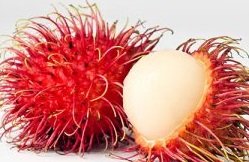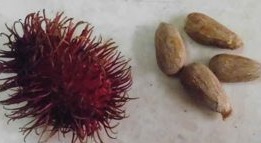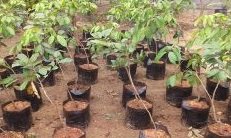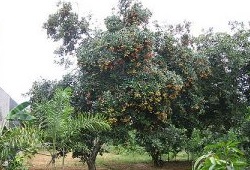how to plant rambutan quickly
Rambutan, Nephelium Lappaceum, is one of the fruits that is quite easy to find. In addition to quite easy to plant it turns rambutan also has many fans. The reason, rambutan fruit is a fruit that has many benefits for the health of the body. But, despite that, in reality not many people know how to plant rambutan properly and correctly.
ads
As mentioned earlier, rambutan fruit is a fruit that has many benefits. That is the reason the more days the more people are
And if you are curious what are the benefits of this rambutan fruit, here are some benefits of rambutan fruit:
Cures diseases caused by vitamin A and C deficiency,
Curing Hypertension,
Curing Diarrhea,
Curing Inflammation, and
Prevent cancer
In addition to the many benefits to cure diseases and maintain healthy body, it turns out that rambutan fruit is a useful carbohydrate content as an additional source of supplementation for the body.
If you are interested in rambutan fruit and want to cultivate it, here is how to plant rambutan that you should know for the rambutan you planted a dense and fast fruit

1 Terms Grow
Rambutan is one type of tropical plant. So no wonder rambutan many found in Indonesia. But despite that, one of the requirements to plant rambutan to produce a bushy and sweet fruit is the height of the plains. Rambutan fruit can only grow to the maximum if it is in the lowlands with a height of about 30-500 mdpl.
In addition to the height, the requirement to grow another rambutan is the amount of rainfall that is obtained. To obtain maximum results, rainfall required by rambutan ranges from 1500 to 2500 mm evenly throughout the year.
2 Determining Land
Planting rambutan can actually be done in two media. Media land and also pot media. For the media land, the thing to note is the type of soil that will be the medium of planting. The soil used for planting media should be fertile, loose soil, and contain little sand. For his own Ph, in order to grow rambutan maximum ranged from 6.5 to 7.
3 Seeds

To plant rambutan, there are several ways to get rambutan seeds. First, you can get it in a generative way that is planting from seeds. Secondly, you can get rambutan seeds by vegetative means such as grafting. If you want to know how to get rambutan seeds by grafting, here are some ways you can make a guide:
For grafting, there are some tools that you should prepare first such as knives, fertile soil mixed with manure, hollow plastic or coconut husk, and rope.
The selection of branches. Characteristics of the branch that can be grafted must have a minimum length of 80cm and has been at least 5 months old. In addition, make sure also the broodstock you will transplant is a quality broodstock tree. Do not let your origin in selecting the tree breeders. Because if you transplant a sick tree, it is certain that your rambutan tree will be diseased as well because the nature of the breeding tree will be carried to the seedlings that you plant.
If you have determined the branch you want in the graft, peel the bark along the 20cm and clean the cambium covering the inside of the branch.
After the stem is cleaned, then the stems are left to dry.
If the stems are dry then you should wrap the branch with soil that has been mixed manure with plastic perforated or coconut husk and both ends of the bandage is tied with string that you have prepared before.
After the transplantation is done, the next important step is to water the graft daily for two months until the root comes out of the transplanted bandage and then transferred to the desired cultivation medium.
4 Planting on land

As already mentioned earlier, planting rambutan can actually be done in planting land or in pots. However, despite that, planting rambutan on the land is the most common and the most recommended. Because if you plant in the planting land, the growth and growth of rambutan that you plant will be more rapidly if you plant it with a pot media. This can happen because the space of motion and the plant growing space is not limited.
For the planting medium itself, you can use a mixture of soil, compost, and manure with a ratio of 1: 1: 1 or with the same amount of dosage on all three. And here are the things to watch out for before planting rambutan on the land:
Try before the planting process is done, the land area is free from wild plants or weeds. This is because wild plants or weeds have the potential as a source of plant diseases and pests. Plants that have been cleared must be burned not stacked and left to rot because it will precisely become a new nest for pests and diseases.
Making a hole. Before planting in the planting land, you need to do first is the making of a planting hole with the size of 1.5m x 1.5m and the depth of the hole 1.5m. However, the size of this hole is certainly not standard because the size of the hole must be adjusted to the size of the seedlings to be planted later. Making this hole should be done 2 weeks before the seedling process is done.
Another thing to consider before you plant rambutan dilahan is to make sure that the planting area has another bigger tree around the planted seedlings. The bigger function of this tree is that the seeds you just planted do not get excessive sun and wind.
If there is no big tree around the seed you plant, all you have to do is to water more seeds with water to meet the water requirement in the process of photosynthesis with a high enough dose. In addition, also provide seeds are buffer so that plants do not collapse when blown by a large wind and roots that are not strong enough to support.
If you want to plant more than one seedlings, keep one seed's distance from the other seeds 10-14m apart so that the growth of the two seeds will not interfere with each other.
How to Plant Rambutan Inside Pot

To plant rambutan in pots, the size of the pot should be the main concern. This is because rambutan can not grow maximally in small pots. The larger the diameter of the pot used will be the maximum development of the rambutan tree you plant. Typically, the size of the pot diameter used ranges from 50cm to 1m.
For planting medium used, you can use the same composition with planting in the planting area. Namely fertile soil, compost, and manure. However, because you plant it in a pot with a space of limited roots, then the addition of the type of planting media composition needs to be done to enrich the element of haranya. The types of ingredients added are husk husk, regular husk, and coconut husk with a ratio of 1: 1 to all of them evenly. In addition, these planting media materials should have been made 2 weeks before planting is done.
There is a special treatment you should do if you want to plant rambutan in pots. In the first three months after the seedlings are planted, keep the seeds not exposed to direct sunlight because the seedlings are in the adaptation stage as they grow apart from the breeders. After passing from three months or good growth, the seeds can be moved elsewhere to be exposed to direct sunlight.
In addition to basic fertilizers at the beginning of planting, rambutan trees are also given further fertilizer for maximum growth. For the type of fertilizer itself, the fertilizer used is usually manure with a mixture of TSP fertilizer with a ratio of 1: 2.
This fertilization is usually done after a 2 year old rambutan tree with fertilizer range as far as the area of the leaf size as diameter.
. Type of Rambutan Disease
Just like any other plant, rambutan tree also has its own disease which if not handled immediately, will make the problem quite serious for your plants. Some diseases commonly encountered in rambutan trees are leaf spot, stem spots, and white roots. To fix this, you can use a porridge of Bordeaux or California porridge for spotting leaves and insecticides for stem spotting.
- Types of Rambutan Pests
Pests that often interfere with the growth of rambutan trees are usually ants, squirrels, bats, fleas, ladybirds, caterpillar fruits, and caterpillar stems. To overcome this, usually a fairly powerful way is to use insecticides and fungicides.
- Pruning
Another treatment in treating rambutan trees is the process of pruning. Pruning is usually done by cutting or trimming branches or stems that are not productive or damaged and die. The function of this pruning is that the supply of tree nutrients is focused on a branch or a productive rod to produce more fruit.
- Harvesting
Rambutan is one of the plants that takes a long time to flower and bear fruit. But despite that, the harvest time is of course determined from the way you planted it early. If you plant it from seed, it certainly takes a longer time when compared to when you plant it with a graft technique. With a graft technique, usually rambutan will start harvesting in the second or third year. While the harvest time itself is usually done during the rainy season. They range from November to February.
To harvest rambutan fruit that has been cooked you can not be done carelessly. You need a sharp cut tool to get perfect results. The part that is cut is the main limb of a rambutan clump that is ripe. It is not recommended to cut the rambutan directly from the base of its branch because it is feared will disrupt the productivity of the trees on the next harvest.
- Post-Harvest Treatment
If the harvest time has passed, there are special treatments that you must do so that the next harvest also produces a maximum harvest. The treatment is fertilizing done about 3 weeks after harvest. Type of fertilizer used is usually NPK and Urea with a ratio of 2: 1. In addition to fertilization, subsequent treatments are pruning where unproductive or broken or broken branches or stems are cut off.